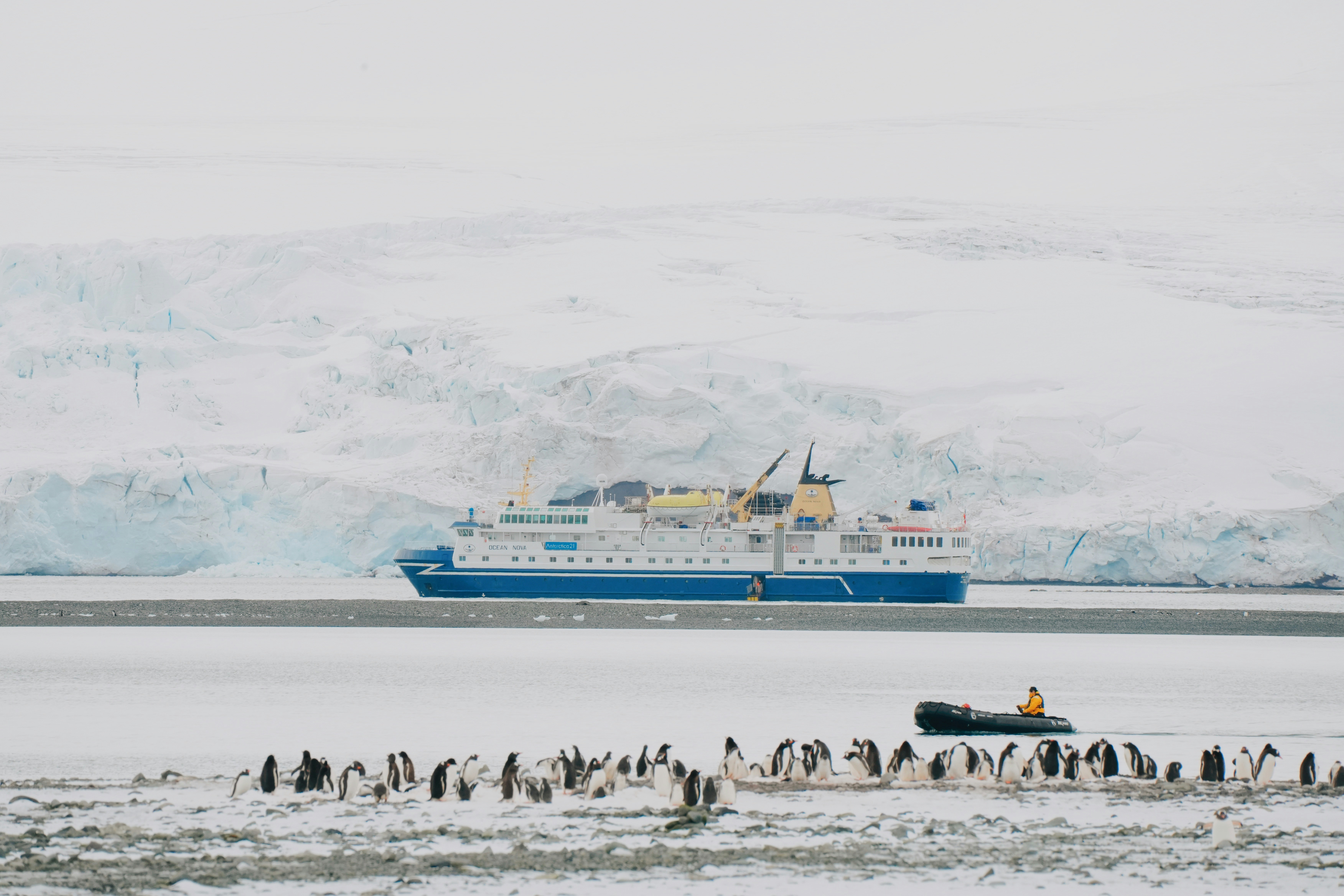Discover Unsold Antarctica Cruises Tailored For Seniors
Antarctica represents one of the last true wilderness frontiers on Earth, and for seniors seeking meaningful travel experiences, it offers unparalleled natural beauty and adventure. Unsold cruise inventory often presents unique opportunities for mature travelers to explore this remarkable continent at more accessible rates. Understanding what makes these voyages special and how to prepare can transform your Antarctic journey into the adventure of a lifetime.

Why Choose an Antarctica Cruise for Seniors?
Antarctica cruises offer seniors a distinctive blend of comfort, accessibility, and extraordinary natural encounters that few other destinations can match. Modern expedition vessels are designed with mature travelers in mind, featuring amenities such as elevators, stable platforms for wildlife viewing, and onboard medical facilities. The pace of these voyages typically allows for rest days between excursions, making them suitable for various fitness levels. Shore landings are carefully managed with zodiac boats that accommodate mobility considerations, and experienced expedition staff provide assistance throughout the journey. The educational component appeals to lifelong learners, with naturalists, glaciologists, and marine biologists offering lectures and guided observations. Unlike more physically demanding adventures, Antarctica cruises balance exploration with comfort, allowing seniors to witness penguin colonies, massive icebergs, and breaching whales without sacrificing safety or convenience.
Benefits Of Unsold Antarctica Cruises For Seniors
Unsold cruise inventory emerges when operators have available cabins as departure dates approach, creating valuable opportunities for flexible travelers. These offerings can provide significant financial advantages compared to standard booking rates, though prices vary considerably based on timing, cabin category, and operator. Seniors with flexible schedules are particularly well-positioned to take advantage of these opportunities, as they can often travel outside peak holiday periods when families are constrained by school calendars. Beyond cost considerations, last-minute bookings sometimes offer cabin upgrades as operators aim to fill premium accommodations. The cruise experience itself remains identical regardless of booking timing, with the same itineraries, expedition staff, and onboard amenities. Many operators also provide loyalty programs or senior-specific promotions that can be combined with unsold inventory for additional value. Travel insurance becomes particularly important when booking closer to departure dates, protecting your investment against unforeseen circumstances.
| Cruise Operator | Typical Duration | Estimated Cost Range |
|---|---|---|
| Hurtigruten Expeditions | 10-14 days | $7,000 - $15,000 |
| Lindblad Expeditions | 11-17 days | $12,000 - $25,000 |
| Quark Expeditions | 8-20 days | $6,000 - $20,000 |
| Oceanwide Expeditions | 10-22 days | $5,500 - $18,000 |
| Silversea Expeditions | 10-18 days | $15,000 - $35,000 |
Prices, rates, or cost estimates mentioned in this article are based on the latest available information but may change over time. Independent research is advised before making financial decisions.
What You Should Know Before Planning Your Antarctica Cruise Trip
Successful Antarctica cruise planning requires attention to several critical factors. The Antarctic season runs from November through March, with each period offering distinct advantages. November marks the beginning of summer with pristine snow conditions and active penguin courtship behaviors. December and January provide the longest daylight hours and warmer temperatures, though they represent peak season with corresponding demand. February and March offer excellent whale watching opportunities as marine mammals feed actively before winter. Medical clearance may be required by some operators, particularly for travelers with specific health conditions, as medical facilities in Antarctica are limited. Comprehensive travel insurance covering medical evacuation is essential and often mandatory. Physical preparation should include regular walking to build stamina for shore excursions, though extreme fitness is not required. Packing considerations include waterproof layers, quality boots suitable for wet landings, and multiple insulating layers as weather changes rapidly. Documentation requirements vary by departure port but typically include passport validity extending six months beyond travel dates. Vaccination recommendations should be discussed with healthcare providers well in advance of departure.
Preparing for Antarctic Conditions
Antarctic weather demands respect and proper preparation regardless of traveler age. Temperatures during the cruise season typically range from 20°F to 50°F, with wind chill creating colder perceived temperatures. Layering systems work best, combining moisture-wicking base layers, insulating mid-layers, and waterproof outer shells. Most cruise operators provide expedition parkas, though personal gear like gloves, hats, and thermal underwear remain individual responsibilities. Seasickness prevention deserves consideration, as the Drake Passage crossing can be challenging even on stabilized vessels. Consultation with physicians about appropriate medications before departure helps ensure comfort. Binoculars enhance wildlife viewing experiences significantly, and many seniors find image-stabilized models particularly useful aboard moving vessels. Photography equipment should include weather protection, extra batteries that drain quickly in cold conditions, and memory cards with ample capacity. Shore excursions typically last two to three hours, with options for different activity levels including gentler walks and more ambitious hikes.
Maximizing Your Antarctic Experience
Onboard enrichment programs transform Antarctica cruises from sightseeing trips into educational expeditions. Daily briefings prepare travelers for upcoming landings and wildlife encounters, while evening recaps review the day’s experiences through expert perspectives. Many seniors appreciate the social aspects of expedition cruising, with shared dining and common areas fostering connections among like-minded travelers. Citizen science programs allow passengers to contribute to ongoing research projects, adding purpose to observations. Flexibility remains crucial, as weather and ice conditions dictate daily schedules rather than rigid itineraries. The most memorable experiences often occur during unplanned encounters with wildlife or unexpected opportunities to explore newly accessible areas. Respecting Antarctic Treaty guidelines ensures this pristine environment remains protected for future generations, with strict protocols governing wildlife distances, waste management, and environmental impact.
Antarctica cruises tailored for seniors combine adventure with appropriate accommodations, creating transformative travel experiences. Unsold inventory opportunities make these extraordinary voyages more accessible for flexible travelers willing to monitor availability and act decisively when opportunities arise. Proper planning, realistic expectations, and openness to the unexpected ensure that your Antarctic journey becomes a highlight of your travel history, offering memories and insights that endure long after returning to warmer latitudes.




